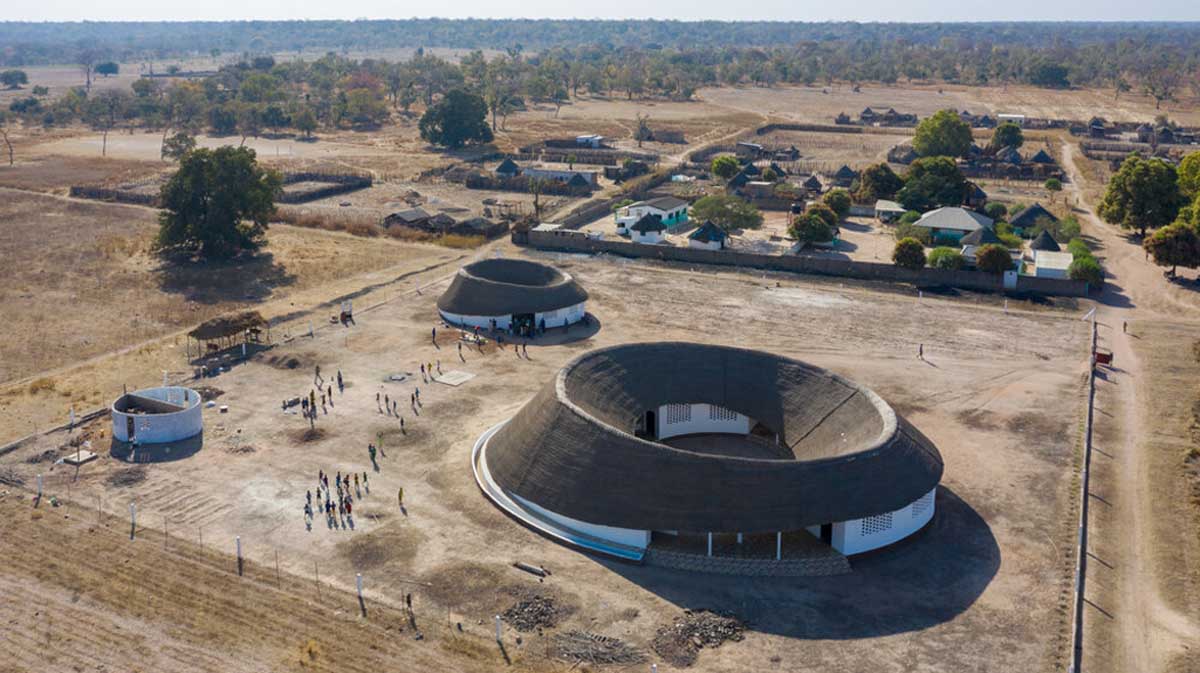A project completed in collaboration with the Josef and Anni Albers Foundation and Le Korsa, the school is designed to serve up to 300 students from ages 5 through 10, accommodating students of different age groups and at diverse stages of development.
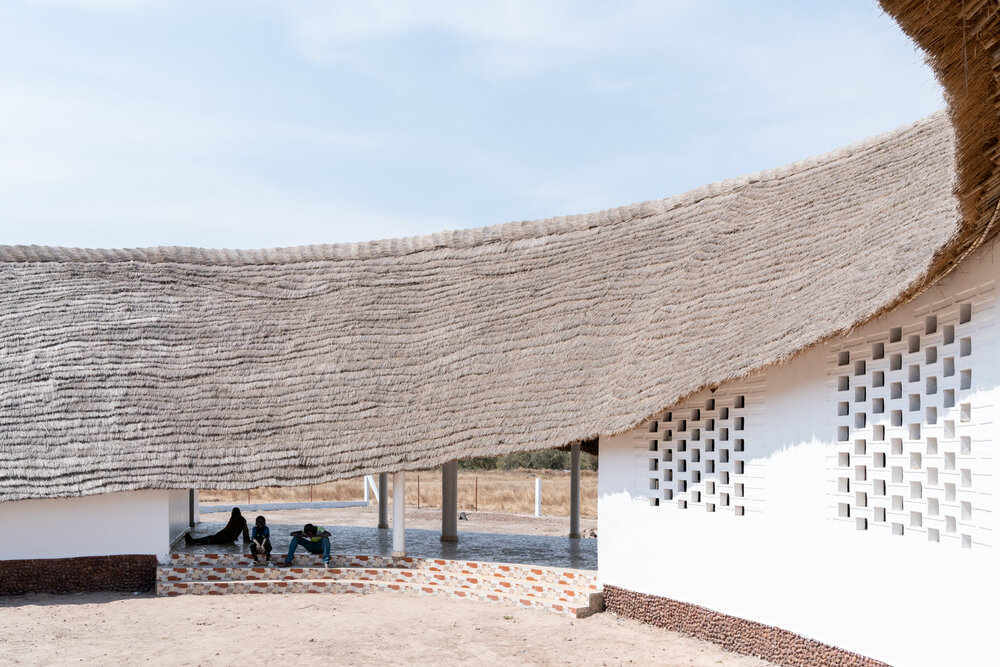
Four classrooms and two flexible spaces are arranged around an interior courtyard, with the oval shape designed for easy circulation between classrooms, allowing the school’s few teachers to move quickly between classes. Height variation of the perimeter walls creates a wide variety of sections and experiences through the building.
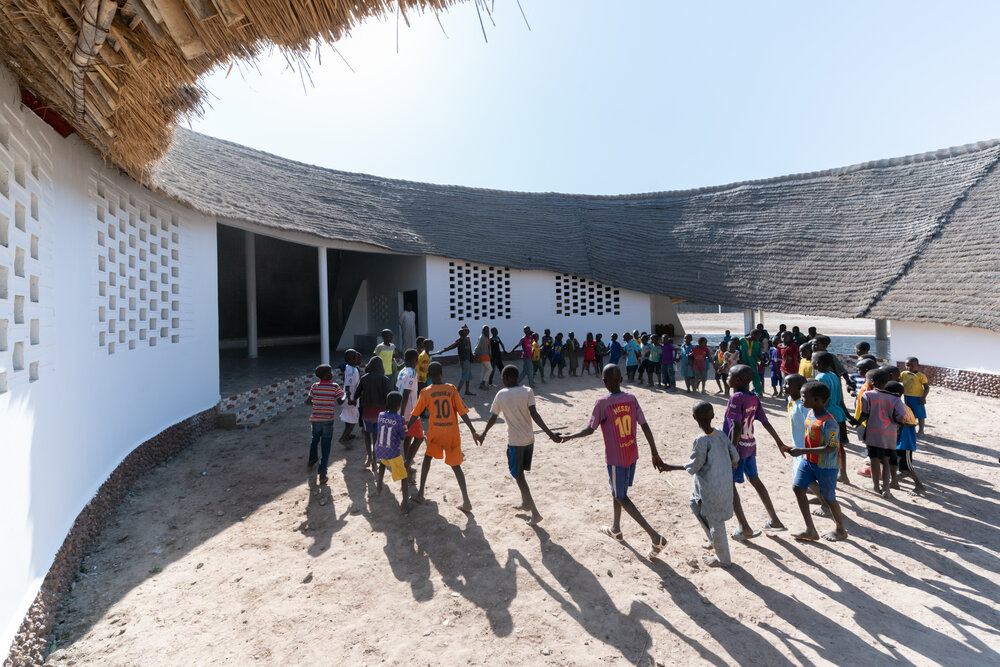
The building’s shape was inspired by local customary design, while its construction utilised traditional skills and materials. The local construction team was provided with instructional diagrams to assist with the sequencing of the structure’s precise geometry – community involvement throughout every phase allows for easy maintenance over time.
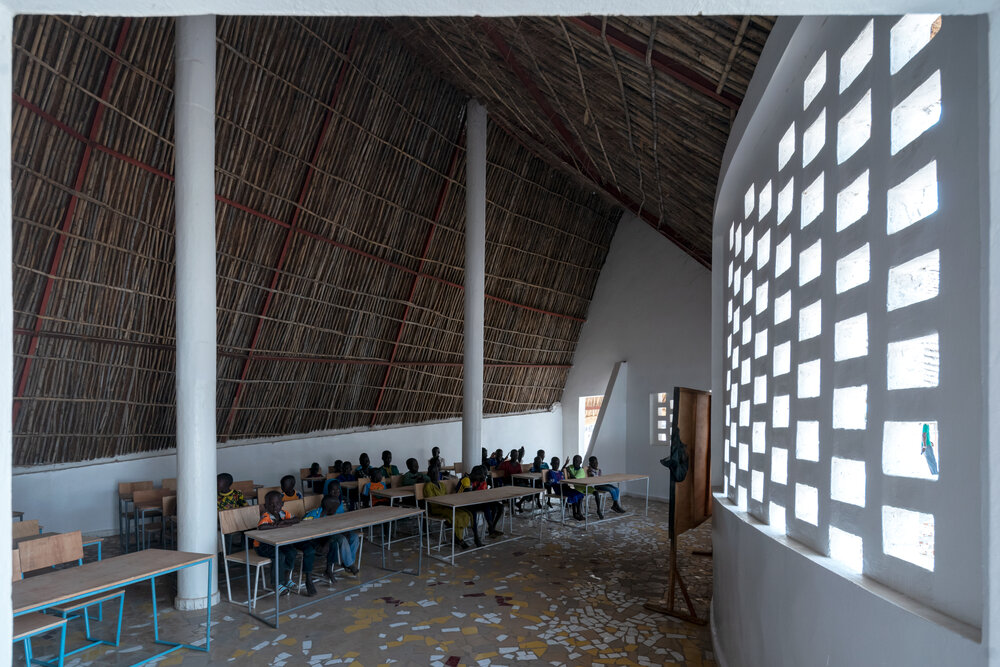
Bamboo supported mud-brick walls are painted white to deflect heat, and perforated to allow for ventilation and airflow throughout the building. An inversion of the traditional pitched roof, the thick thatch roof reinforces climatic comfort by providing an effective insulation against extreme heat.
A stack effect allows hot air to rise into the peak of the roof while inviting cool air into the spaces. With a roof pitch consistently 45 degrees or greater, the unique form also maximizes rainwater runoff, diverting water into a channel that encircles the building and empties toward an existing aquifer.
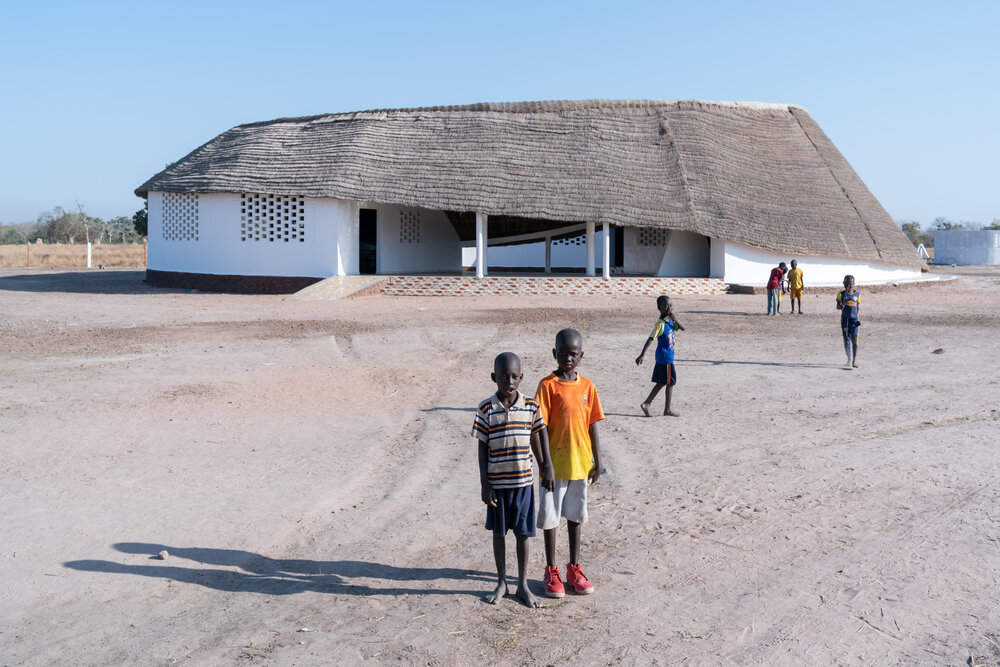
Josef Albers was an American-German artist best known for his iconic color square paintings, also known as his ‘Homage to the Square’ series. These works, along with his writings, are considered invaluable contributions to colour theory.

